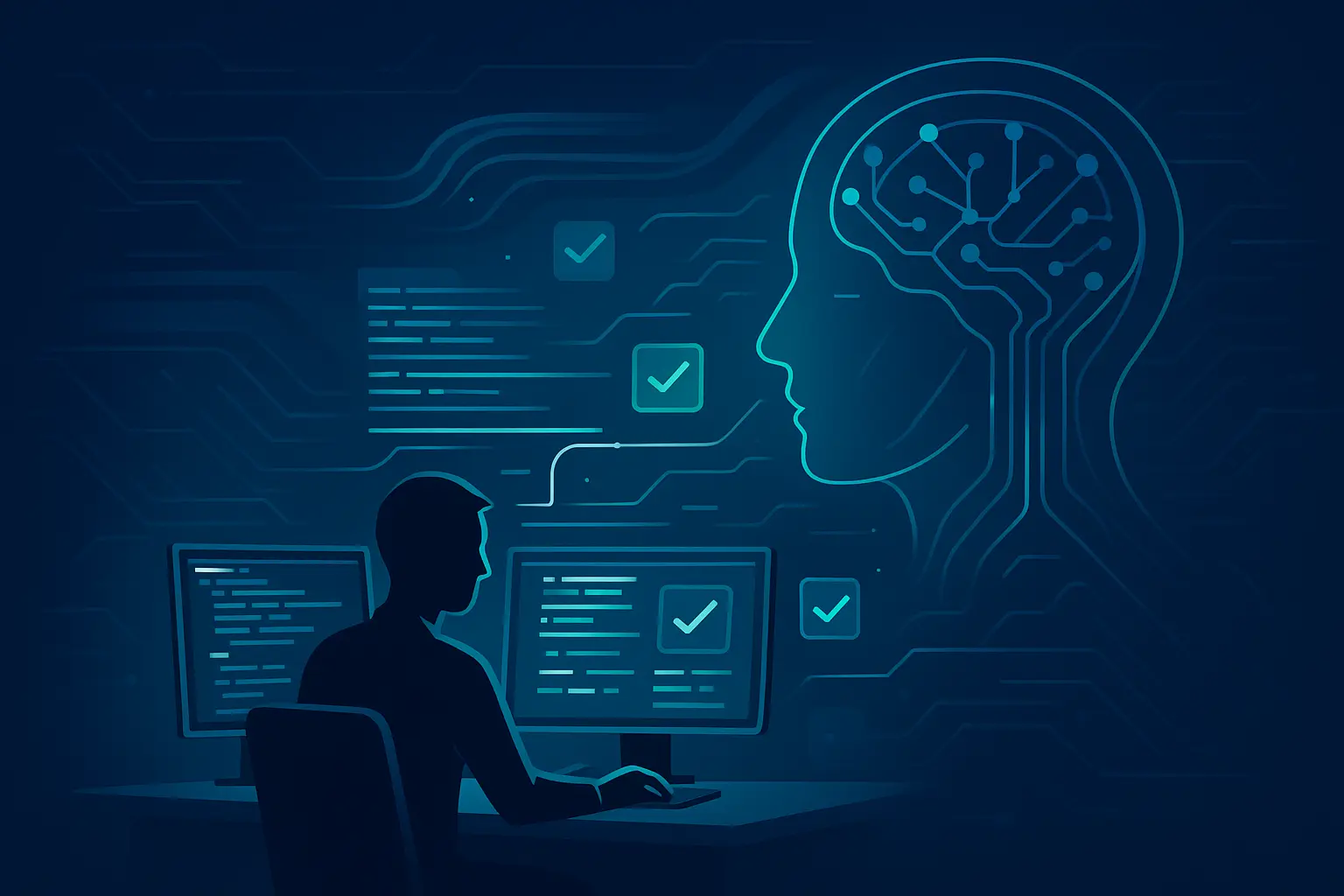Artificial Intelligence is actively reshaping quality assurance, but the central question isn't whether AI will change QA careers—it already is. Explore how professionals can position themselves to remain essential contributors to software quality in the next decade.
Artificial Intelligence (AI) is no longer an experimental tool in software engineering. It is actively reshaping how software is designed, developed, and validated³. Quality Assurance (QA) functions, historically positioned between development speed and delivery confidence, are entering a phase of significant transformation.
The central question is not whether AI will change QA careers—it already is—but how professionals can position themselves to remain essential contributors to software quality in the next decade.
From Script Writing to AI Orchestration
Automation frameworks such as Selenium, Playwright, or Cypress have traditionally been core differentiators in QA automation roles. However, emerging AI-powered testing tools can now generate and execute test scripts with 70-85% accuracy for basic scenarios, though they still struggle with complex workflows¹.
This does not diminish the importance of QA expertise. Instead, it shifts the value proposition:
AI Direction: QA professionals will increasingly act as "quality directors," instructing AI systems where to focus and validating outcomes against business risk.
Critical Oversight: AI remains prone to false positives, incomplete coverage, and systemic blind spots². Human review will ensure quality remains aligned with risk.
Domain Knowledge: Business logic, compliance, and context-specific risk assessments remain outside AI's autonomous capabilities.
The practical implication is that tool-specific mastery will become less critical, while judgment and domain-specific quality insights will become more valuable.
Impact Across Career Levels and Specializations
The impact of AI on QA careers is not uniform across roles:
Manual QA: Routine test case execution is highly automatable, but exploratory testing, usability evaluation, and ambiguity handling remain human-driven.
QA Automation Engineers: Responsibilities will move from "script authoring" to curating AI-assisted test ecosystems, integrating human-designed quality strategies with AI-generated execution.
QA Leaders: Strategic governance of AI adoption will be central, particularly in relation to ethical, regulatory, and compliance-driven risks.
In all cases, adaptability and the ability to manage the intersection of human reasoning and AI execution will become core differentiators.
Geographic and Industry Considerations
QA practices vary significantly across industries, with AI adoption rates showing substantial differences. Current data shows financial services at 12% adoption due to regulatory concerns, healthcare at 29% with compliance barriers, and retail at 4% despite growth plans².
Where geographic differences emerge is in regulation and governance:
Europe: The EU AI Act, enacted in August 2024³, imposes requirements for transparency, bias mitigation, and auditability. QA professionals in Europe increasingly serve as compliance verifiers and audit trail designers.
North America: With sector-specific voluntary approaches rather than comprehensive regulation, adoption is moving faster⁴, creating demand for QA engineers who can balance velocity with responsible use of AI-generated assets.
These factors suggest that while AI itself creates consistent technical impacts, geopolitical and regulatory dynamics will shape career trajectories differently across regions.
Strategic Skill Investment for QA Professionals
Looking ahead, the QA career path will be defined by the ability to remain relevant in hybrid human-AI ecosystems. Four skill clusters stand out:
AI Literacy: Understanding model behavior, bias, and failure modes.
Risk-Based Test Strategy: Translating business and technical risk into test objectives AI cannot infer.
Ethics & Compliance: Ensuring fairness, accountability, and explainability in AI-driven systems.
Cross-Functional Leadership: Communicating AI limitations and test coverage risks to developers, product owners, and stakeholders.
The Strategic Outlook
The adoption of AI in QA should not be interpreted as a path toward redundancy. Rather, it represents a reallocation of value: repetitive tasks will increasingly be automated, while oversight, risk assessment, and strategic test design will define the human contribution⁴.
In short: QA will evolve from execution-heavy roles to judgment-heavy ones. The professionals who thrive will be those who combine AI-enabled efficiency with human-led responsibility for quality outcomes.
References
¹ Gartner, Inc. (2024). Market Guide for AI-Augmented Software-Testing Tools. Gartner Research.
² McKinsey & Company. (2024). The State of AI: How Organizations are Rewiring to Capture Value. QuantumBlack AI Report.
³ European Commission. (2024). AI Act Enters into Force. Official Journal of the European Union, August 1, 2024.
⁴ Stack Overflow. (2024). Developer Survey: AI Usage and Trends. Stack Overflow Annual Survey.
⁵ Northcutt, C., Athalye, A., & Mueller, J. (2021). Pervasive Label Errors in Test Sets Destabilize Machine Learning Benchmarks. Proceedings of the NeurIPS Conference.

